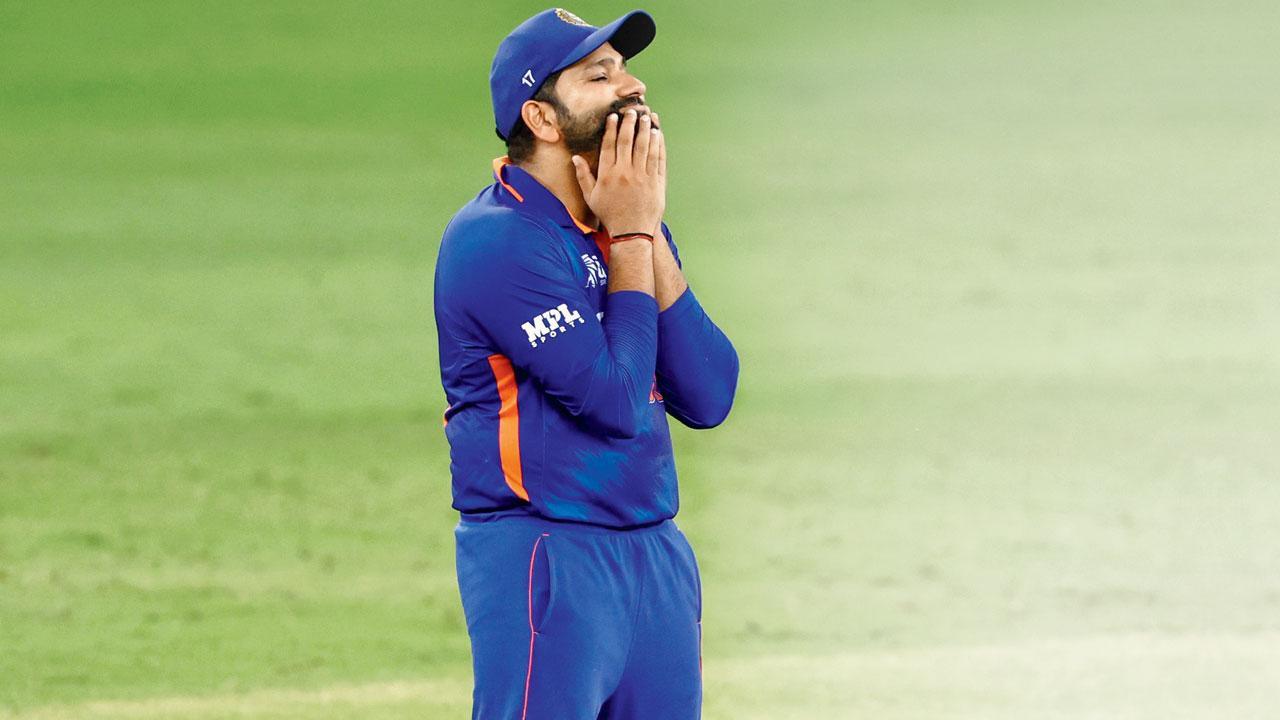India’s second consecutive Asia Cup Super 4 loss in a similar fashion, this time to SL by six wickets, has brought up the middle-order’s vulnerability and listless death-overs bowling among other things

India captain Rohit Sharma reacts during the Asia Cup clash against SL at Dubai on Tuesday. Pic/Getty Images
To paraphrase Rudyard Kipling, victory and defeat, both of which make good copy, are but imposters which must be treated the same. Or at least that’s what Rohit Sharma’s philosophy is.
ADVERTISEMENT
The six-wicket loss to Sri Lanka in their second Super 4 encounter of the Asia Cup on Tuesday is either a minor setback in the larger scheme of things, a major disaster in the immediate term, or a bit of both.
Defeat to Pakistan on Sunday could have been attributed to ‘one of those things’, which doesn’t really mean anything, but a second consecutive loss which followed a similar pattern has exposed some chinks in what appeared to be a well-oiled machine even a week back.
Unaccustomed roles
Of the many talking points is the inability of the middle-order to build on platforms, and of a certain brittleness to the death-overs bowling that could still be rectified when Jasprit Bumrah returns from injury. There certainly is a plan behind the constant rejigging of playing XIs and the assignation of different, unaccustomed roles to players even this close to the T20 World Cup, but what those plans are is a little difficult to fathom, especially in light of the wrong results.
Not for the first time in recent years, India haven’t been able to replicate stirring form in bilateral contests to a more expansive stage. Coming off excellent wins in England and against West Indies, India’s reputation in multi-team events has taken another beating, building on their inability to qualify for the semi-finals of the last T20 World Cup in these same parts 10 months back.
Rohit acknowledged that there was ‘more pressure’ and ‘greater challenges’ in such tournaments because the opposition keeps changing, adding, “Our job is, when we’re under pressure, how the boys should take decisions, the shots you play under pressure, the balls you bowl.”
India haven’t taken the best decisions on the field—off it too, some might say, pointing to Deepak Hooda’s presence at No.7 instead of the more acclaimed and specifically requisitioned Dinesh Karthik—or played the most intelligent shots under pressure.
Also Read: England recall Alex Hales for T20 World Cup
Not just one-off performances
Their bowling at the death in two games on the bounce has been less than spot on, and while it might be tempting to write them off as part and parcel of the game, an emerging pattern makes it hard to reconcile to such performances as strict one-offs.
That being said, it’s hardly time to sound the alarm bells. There is too much class, quality, pedigree, commitment and ambition within the group not to be stung by these reverses, not to be affected by the absence of global silverware since 2013.
Onus of coach Dravid
India’s revamped blueprint for the T20 game has been obvious to even the casual onlooker, and their methods have been vindicated by the string of good results since the last World Cup.
It’s a question of the pieces of the jigsaw coming together at the right time—in Australia from next month—and there is no reason why that can’t happen, what with the core management group manned by wise heads with coach Rahul Dravid in the forefront.
 Subscribe today by clicking the link and stay updated with the latest news!" Click here!
Subscribe today by clicking the link and stay updated with the latest news!" Click here!







